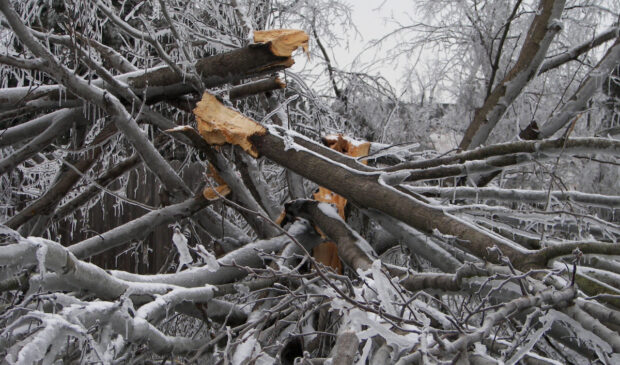City Council hears preliminary findings on what went wrong with city response to Winter Storm Mara
Thursday, April 13, 2023 by
Nina Hernandez As extreme weather in Central Texas becomes more frequent, what is Austin doing to bolster its emergency preparedness? At its work session on Tuesday, City Council heard a preliminary update on the audits examining what broke down in the city’s response to Winter Storm Mara in February.
The audit is looking into how the city should open and manage emergency shelters, how the city can build community preparedness for storms, and the capacity of each city department to help in that effort.
The after-action report currently in progress consists of five phases, according to Ken Snipes, who was named to a special assignment overseeing an evaluation of the city’s emergency response in March.
“As you all know, the full after-action report takes quite a bit of time to complete. But I want to be clear: We are already working on these issues. We are not waiting until the completion of the after-action report,” Snipes said.
The first phase is a departmental preliminary analysis, which is ongoing. Snipes said he has spent the time since his assignment working to meet with the mayor and each Council office to hear the policymakers’ biggest questions and concerns.
“I hope I wasn’t too pushy and demanding of your time, but I just want to make clear that this issue has been really front and center for interim City Manager (Jesús) Garza and all of the other city leaders, as we want to make sure that we’re supporting the people of Austin in the most beneficial way possible,” Snipes said.
Snipes said by far the most common concern raised during his discussions was the need for a digital communications strategy. Council wanted to know what happens when the ability to communicate by traditional channels is compromised, as well as best practices and protocols for elected officials during extreme weather events. Additionally, members wanted to know what the city can do to bolster community preparedness.
“As Austin starts to experience storms more often and weather issues more often, Council members and elected officials wanted to know what we are doing to prepare our communities,” Snipes said.
Shelter protocols and backup power were also common issues raised.
“We were not clear, in many cases, when shelters were opening, which shelters were opening when,” Snipes said. “Many of you shared concerns about the fact that we don’t have backup power at many of the locations that have been identified for backup shelters or emergency shelters.”
Snipes said members want to know what steps need to be taken to prepare the community for other weather events and natural disasters.
“While the hot topic right now centers around winter storms, there was also a desire to have discussions and training and practice around what we do when there are floods? What do we do if there are fires? And we’re asking people to leave their homes at 1 a.m.? What does that process look like?”
Phase two includes a preliminary after-action report in which the management team will address critical questions, identify the root causes of major findings, and compare responses to winter storms Uri and Mara. Phase three will include a joint after-action report with Travis County to evaluate how the two entities are working together during emergency response. In phase four, the team will identify solutions to the issues and implement them. Phase five will deliver the final report, which should arrive in late June.
Austin Energy’s interim General Manager Stuart Reilly also addressed Council during the presentation to update members on the utility’s after-action review of its own response to Mara.
Reilly said the utility has already completed the planning and discovery phases of its assessment. The discovery phase included interviews with 200 incident command participants at Austin Energy. It is currently in the analysis phase, in which it is addressing critical questions, identifying root causes of those major findings and analyzing its Uri versus Mara responses.
The corporate quality services team leading the review has so far conducted more than 20 cross-functional meetings, Reilly said.
Several major issues stood out from the preliminary results. First is that the outage text alerts “confused customers and sent them into an outage reporting loop,” Reilly said. Austin Energy has already made some improvements to those text alerts, including increasing the timeout threshold. “But there’s more work to do there for sure,” Reilly said.
Other issues include the outage map user experience, restoration coordination process and communications strategy. Another “big one,” Reilly said, is incorrect systemwide estimated time of restoration. The utility will also be looking into opportunities to upgrade and repair its vegetation management infrastructure with a focus on resiliency. Reilly noted that while the assessment is ongoing, Austin Energy is similarly not waiting for the results to begin making improvements.
The Austin Monitor’s work is made possible by donations from the community. Though our reporting covers donors from time to time, we are careful to keep business and editorial efforts separate while maintaining transparency. A complete list of donors is available here, and our code of ethics is explained here.
You're a community leader
And we’re honored you look to us for serious, in-depth news. You know a strong community needs local and dedicated watchdog reporting. We’re here for you and that won’t change. Now will you take the powerful next step and support our nonprofit news organization?








